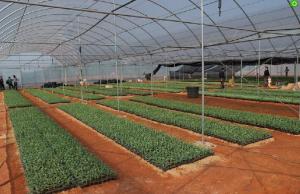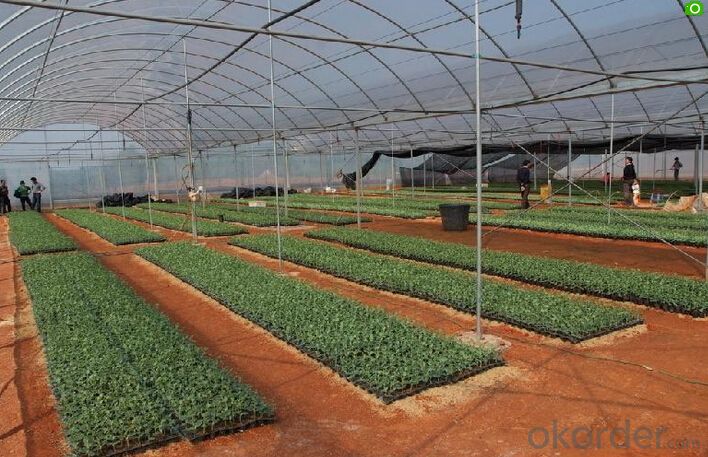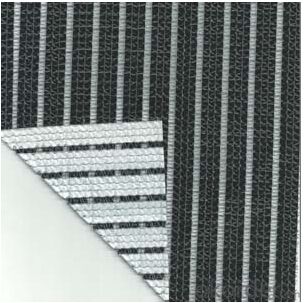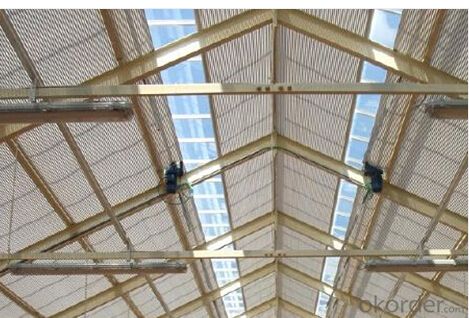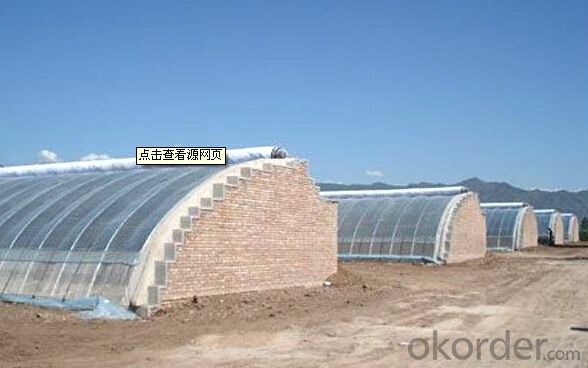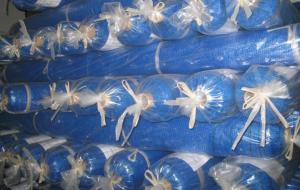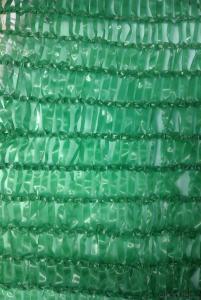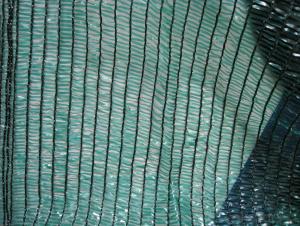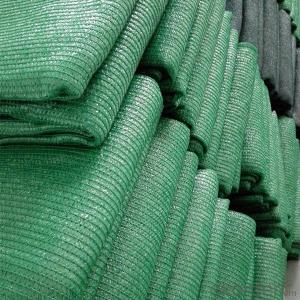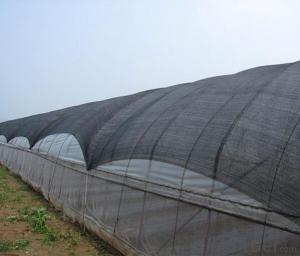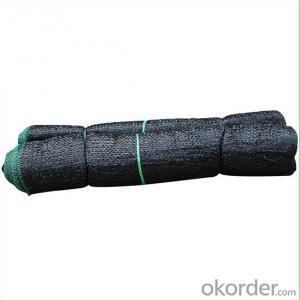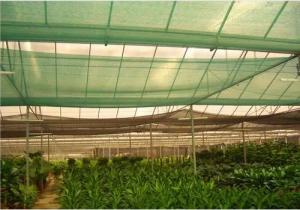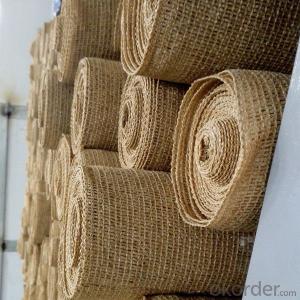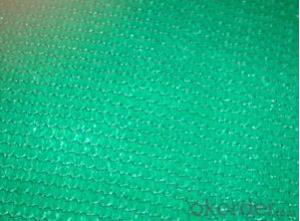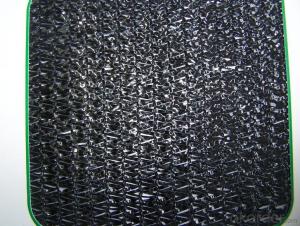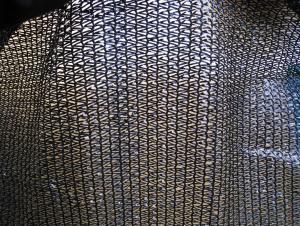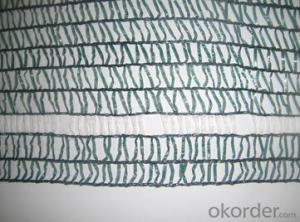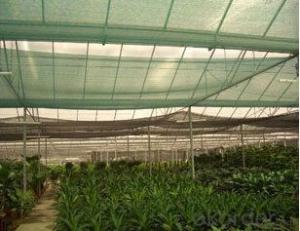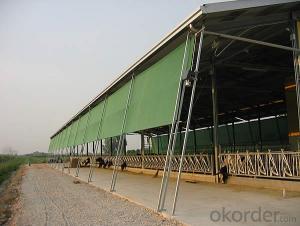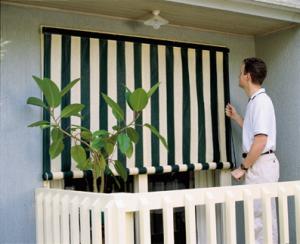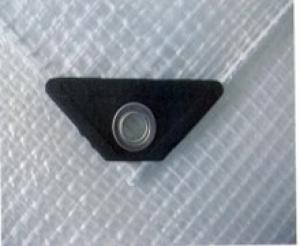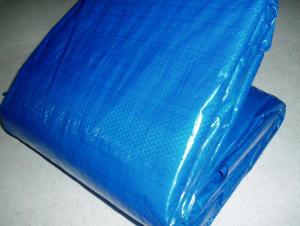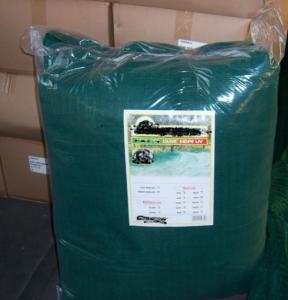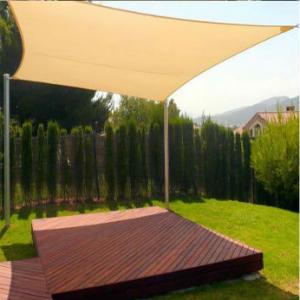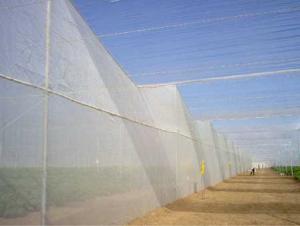Plastic Nets - Thermal Screens HDPE Sunshade Net Double Color for Greenhouse
- Loading Port:
- Shanghai
- Payment Terms:
- TT or LC
- Min Order Qty:
- 1000 m²
- Supply Capability:
- 300000 m²/month
OKorder Service Pledge
OKorder Financial Service
You Might Also Like
Thermal Screens Save on Costs, Maximum. Plant Growth
Cost and Energy Savings for your GreenhouseThermal screens are by far one of the most effective energy and cost saving technologies for modern greenhouses. Power plants’ brings the growth-max. Thermal Shade Screens to all over the world. Our thermal screens open when light is limited and close when light is excessive. They also reduce heat loss, dew drop, heating costs, and help to maintain a more constant and comfortable greenhouse climate for your crop and your staff.
How do Thermal Screens Work?
Reflect light when it is excessive China is one of the hottest, driest countries in the world. While this is great in winter, summer heat is a big problem. High temperatures are caused by excessive light getting into the greenhouse. Our Thermal Screens are made of polished aluminum strips, which reflect light straight back out of the greenhouse.
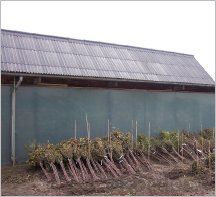
Retract when light is limiting On cloudy days or in the mornings and afternoons, light becomes limited and plant growth slows down. So CNBM’ Thermal Screens retract automatically in order to maximum growth.
Reduce heat loss at night The screens are automatically closed at dusk in order to trap as much heat as possible for the night. This means that heating costs are greatly reduced by 20 to 70%.
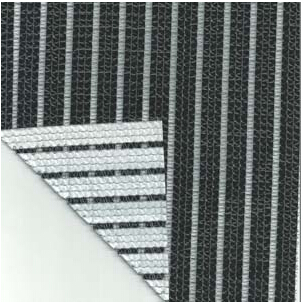
Reduce condensation on leaves and fruit The screens keep the crop warmer, reducing the possibility of condensation forming and leading to fungal disease. CNBM’ Thermal Screens are made from aluminum and polyester, which are excellent insulators. Aluminum reflects long wave radiation from the crop back down to the crop, and polyester absorbs long wave radiation and provides a warm ‘blanket’ above the crop, reducing radiation heat loss. With gas and energy prices still rising, can you afford not to save even 20%? By reducing the amount of energy you consume, you will also be doing your part to reduce global warming, too.
Increase production & quality, decrease costs, increase profit! With a lifespan of 8 to 10 years, CNBM’
Thermal Screens give you a phenomenal return on investment.
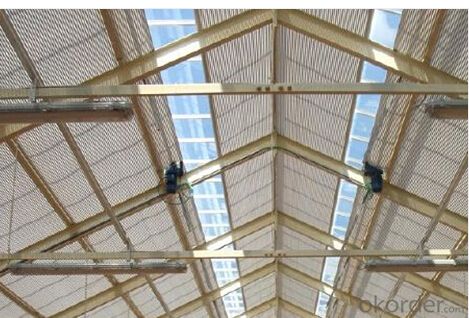
- Q: Are plastic nets commonly used in the medical field?
- No, plastic nets are not commonly used in the medical field.
- Q: How do plastic nets provide protection against pests?
- Plastic nets provide protection against pests by creating a physical barrier that prevents pests from accessing plants or crops. The fine mesh of the nets acts as a barrier, preventing insects, birds, and other pests from reaching the plants and causing damage. Additionally, plastic nets can also deter larger pests like rabbits or deer from entering and feeding on the plants.
- Q: Do plastic nets come with anti-fungal properties?
- No, plastic nets typically do not come with anti-fungal properties.
- Q: Can plastic nets be used for beekeeping purposes?
- Yes, plastic nets can be used for beekeeping purposes. They can be used as protective barriers around beehives to prevent pests and predators from entering the colony while still allowing airflow. Additionally, plastic nets can also be used in certain beekeeping techniques such as queen rearing or swarm control.
- Q: Are plastic nets suitable for use in swimming pool areas?
- No, plastic nets are not suitable for use in swimming pool areas as they can easily deteriorate when exposed to chlorine and UV exposure, and may not provide adequate safety or durability required in such environments.
- Q: How are plastic nets different from mesh fabrics?
- Plastic nets are typically made from synthetic materials like nylon or polypropylene and are designed with larger openings or gaps between the threads. They are commonly used for applications like fishing nets or safety barriers. On the other hand, mesh fabrics are woven textiles made from various materials such as cotton, polyester, or nylon. They have smaller and more closely-knit openings, making them suitable for applications like clothing, upholstery, or filtration.
- Q: Are plastic nets lightweight?
- Yes, plastic nets are lightweight.
- Q: Are plastic nets suitable for use in hydroponic systems?
- Yes, plastic nets are suitable for use in hydroponic systems. They are commonly used as support structures for plants, providing a stable base for the roots to grow and allowing proper circulation of water and nutrients. The open design of plastic nets also promotes good aeration and prevents waterlogging, making them an efficient choice for hydroponic setups.
- Q: Are plastic nets suitable for use in bird sanctuaries?
- No, plastic nets are not suitable for use in bird sanctuaries. They can pose a significant threat to birds, as they can become entangled in the nets and suffer injuries or even death. Additionally, birds may mistake the nets for food and ingest them, leading to serious health issues. Therefore, it is important to use alternative materials that are safe for birds in order to maintain a healthy and secure environment in bird sanctuaries.
- Q: Can plastic nets be used for anti-bird netting?
- Yes, plastic nets can be used for anti-bird netting. Plastic nets are commonly used as a cost-effective and durable solution for protecting crops, gardens, and other areas from bird damage. These nets are designed to create a physical barrier that prevents birds from accessing certain areas, making them an effective tool for reducing bird-related issues.
Send your message to us
Plastic Nets - Thermal Screens HDPE Sunshade Net Double Color for Greenhouse
- Loading Port:
- Shanghai
- Payment Terms:
- TT or LC
- Min Order Qty:
- 1000 m²
- Supply Capability:
- 300000 m²/month
OKorder Service Pledge
OKorder Financial Service
Similar products
Hot products
Hot Searches
Related keywords
